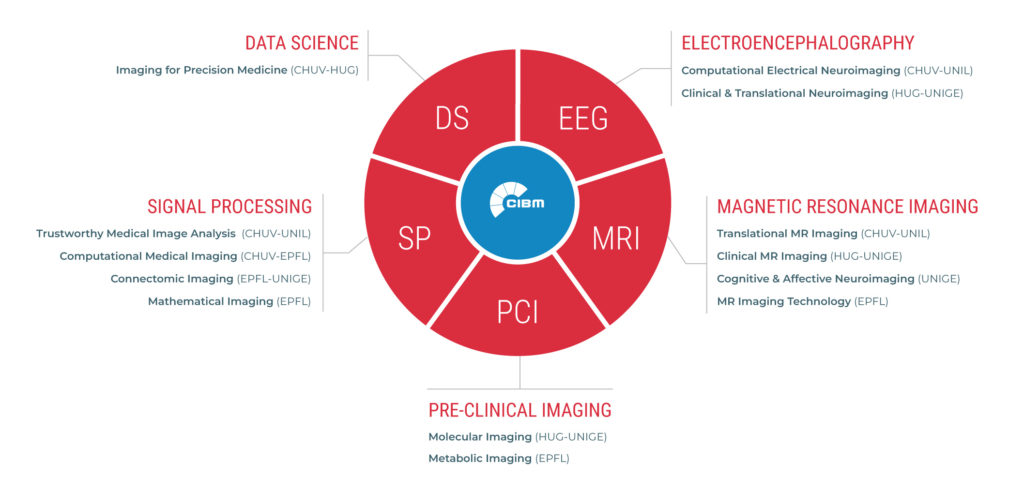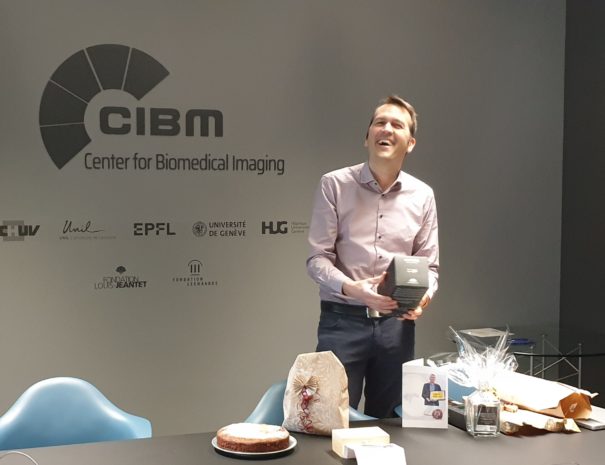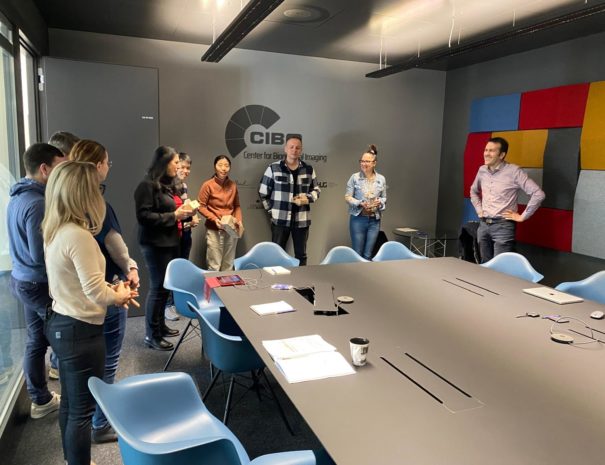
CIBM is pleased to announce significant organizational changes and leadership appointments designed to strengthen our research capabilities and enhance our scientific expertise. These strategic updates reflect CIBM’s commitment to advancing cutting-edge biomedical imaging research and fostering interdisciplinary collaboration across our partner institutions.
MRI Module: New Leadership and Direction
We are delighted to welcome Prof. Dimitrios Karampinos, the new Head of the CIBM MRI EPFL Section expert in MR Imaging Technology This appointment marks an important milestone in our ongoing efforts to enhance our MRI research capabilities and develop innovative technologies for biomedical applications.
We also extend our sincere gratitude to Prof. Dimitri Van De Ville, as the ad-interim CIBM MRI Section Head since 2020, for his invaluable contributions during the transition period. His leadership has been instrumental in maintaining the section’s research momentum and ensuring continuity in our projects and collaborations.
The CIBM MRI EPFL MR Imaging Technology Section will continue to focus on developing novel MRI acquisition and reconstruction techniques, with an emphasis on pushing the boundaries of what is possible with low and high-field MRI systems, including the recently enhanced 7T platform at Campus Biotech.
Pre-Clinical Imaging Module: Expanded Scope and New Section
In a significant organizational change, we are pleased to announce the renaming of the PET Module to the Pre-Clinical Imaging Module, reflecting a broader scope that encompasses multiple imaging modalities used in pre-clinical research. This strategic adjustment allows for more comprehensive approaches to translational research and better integration of diverse imaging technologies.
As part of this reorganization, we are excited to introduce the new CIBM Pre-Clinical Imaging EPFL Metabolic Imaging Section which will be led by Dr. Cristina Cudalbu This section will focus on developing and applying advanced imaging techniques to study metabolic processes in living systems, with applications ranging from neurodegenerative disorders to cancer research. The previously CIBM PET HUG UNIGE Molecular Imaging Section headed by Prof. Valentina Garibotto will be part of the Pre-clinical Imaging Module.
The expanded Pre-Clinical Imaging Module represents CIBM’s commitment to bridging the gap between basic scientific discovery and clinical application, providing a robust platform for translational research initiatives.
Signal Processing Module: Refined Focus and Updated Sections
The Signal Processing Module has undergone refinements to better reflect current research directions and technological advancements. The following changes have been implemented:
- Trustworthy Medical Image Analysis Section (CHUV-UNIL)
Previously: Computational Neuroanatomy & Fetal Imaging
The CIBM Signal Processing CHUV-UNIL Trustworthy Medical Image Analysis Section focuses on developing advanced image processing and machine learning techniques for medical image computing. The section addresses challenges such as image quality assessment, super-resolution, registration, detection, segmentation, and normative modeling, with direct applications in computer-aided diagnosis and therapy planning.
The group maintains a strong emphasis on translational research through collaborations with clinical partners in radiology, neurology, oncology, neuroscience, and psychiatry. To support clinical integration, methods are developed in alignment with emerging regulatory requirements for trustworthy and explainable AI in healthcare, with particular attention to uncertainty quantification and robust domain adaptation to ensure reliable, reproducible results across diverse clinical settings.
The section also emphasizes human-centered AI design—promoting interpretability and effective communication of model outputs to support clinical decision-making and foster clinician trust.
- Computational Medical Imaging Section (CHUV-EPFL)
Previously: Computational Medical Imaging & Machine Learning
The CIBM Signal Processing CHUV-EPFL Computational Medical Imaging Section conducts research in biomedical imaging reconstruction and analysis. It focuses on developing novel modeling, acquisition, reconstruction, and analysis techniques for magnetic resonance imaging (MRI) and ultrasound imaging.
In particular, the section’s research projects target microstructure imaging using diffusion MRI, with applications in fields such as neuroscience—especially brain microstructure and structural brain connectivity analysis—oncology, and beyond. The section also provides expertise in machine learning applied to image reconstruction and analysis.
- Connectomic Imaging Section (EPFL-UNIGE)
Previously: Network Analysis & Functional MR Imaging
The CIBM Signal Processing EPFL-UNIGE Connectomic Imaging Section develops methods that characterize the brain’s network structure and generalizes these to different imaging modalities, including structural and functional MRI, and M/EEG, with applications to cognitive and clinical neurosciences.
The section develops multimodal approaches based on graph signal processing and extends this framework to other parts of the central nervous system and the body. Through these innovative methods, the Connectomic Imaging Section contributes significantly to our understanding of brain connectivity in health and disease.
- Mathematical Imaging Section (EPFL)
The CIBM Signal Processing EPFL Mathematical Imaging Section develops mathematical frameworks and advanced algorithms for the reconstruction of biomedical images. The section focuses on designing reliable machine-learning-based methods that come with mathematical guarantees of convergence and stability.
Researchers in this section also explore the use of generative models and efficient Bayesian sampling techniques to reduce and quantify uncertainty, advancing the theoretical foundations of biomedical image reconstruction.
These organizational changes and new appointments reflect CIBM’s commitment to excellence in biomedical imaging research and our dedication to fostering interdisciplinary collaboration across our partner institutions: EPFL, UNIGE, UNIL, CHUV, and HUG.
The updated structure will enable more focused research efforts, stronger collaborations, and enhanced capabilities to address complex challenges in biomedical imaging. We look forward to the new scientific breakthroughs and technological innovations that will emerge from these strategic changes.



